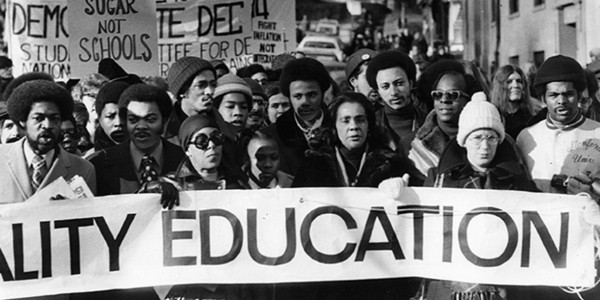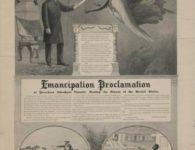Photo credits: Bill Curtis for The Boston Globe via Getty Images
Approximately 15 years behind the U.S. Supreme Court’s mandate to outlaw racial discrimination in the historic Brown vs. Board of Education ruling, America’s High Court revisited the controversial and nationwide dilemma of establishing integration in public schools.
The U.S. Supreme Court ordered that public school districts across America had to discontinue racial segregation “now and hereafter” on Oct. 29, 1969. This cut and dried language in the High Court’s mandate (which then had Thurgood Marshall as its first Black member) expressed intolerance for any delays in adherence by school districts.
The Supreme Court’s ruling was in response to a legal summons, which was made by lobbyists who were staunch segregationists. However, these pro-segregation advocates experienced a prior loss to court. The High Court ruled overwhelmingly that the state of Mississippi (as well as the entire nation, by, and large) was legally obligated to begin the integration of public schools along racial lines “at once.”
The 1969 ruling by the U.S. Supreme Court’s justices exhibited a conspicuous shift from the legal linguistics, which were present in 1955’s Brown vs. Board of Education decision about desegregating public schools. The 1955 ruling mandated that the race-based integration of public schools was to occur “with all deliberate speed.”
In numerous regions throughout the U.S., public education officials viewed the 1955 High Court racial intergration mandate as lax. Therefore, in practice, local school boards followed the Brown vs. Board of Education ruling reluctantly. School districts complied with the Supreme Court’s anti-segregation orders on their own terms.
However, the less vague and more succinct legal language within the Supreme Court’s 1969 ruling made the tenets of its school desegregation policy much more clear. Regardless of what was written in the 1969 education mandate made by the highest court in America, a systemic resegregation process has come to pass in the nation’s public schools along racial lines.
In May 2003, a report by the North Carolina Law Review and the UNC School of Law titled The Segregation and Resegregation of American Public Education: The Court’s Role clearly describes the aforementioned process. The 27-page report also shows how education-based segregationists have achieved their goals in spite of the Supreme Court’s anti-segregation rulings for public schools.
Finally, this empirically-sound and data-driven report identifies the High Court’s indirect complicity in the success of education-based resegregationists. Their exploitation of America’s pro-white, pro-rich, and race-based accountability gaps has gone on systemically for decades. Rampant loopholes in federal laws that govern education funding have created even more gross inequities within America’s public education system.
The verifiable adversities brought on by these gross inequities (along lines of race and economic class) in K-12 public education funding from federal sources are still apparent today.





















No comments